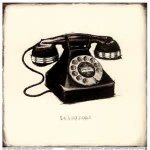I found a strange thing on eBay; search for "SPDIF output tube stage,6S31B".
If I understand correctly what this is for, it's one of the most curious way I've ever seen tubes to be sold to audio people. =)
This forum is full of knowledgeable people, can somebody explain to me where the tube sound comes in?
If I understand correctly what this is for, it's one of the most curious way I've ever seen tubes to be sold to audio people. =)
This forum is full of knowledgeable people, can somebody explain to me where the tube sound comes in?
In the purchaser's mind. I suspect that it's really just poor English and that the actual item is a DAC with an SPDIF input and an incompetent tube output. If it really is a tube handling the SPDIF signal, my current sig line is proved once again.
The ebay listing appears to be a subminiature tube CF for SPDIF, with a choice of capacitor or transformer output. Unusually, this one is not from China but the old Eastern bloc. There are lots of Russian submin tubes around.
Yeah, it does seem that way. It does kinda look like a tube driven SPDIF.
Here is the item with a photo and a diagram.
SPDIF Output Tube Stage 6S31B | eBay
Here is the item with a photo and a diagram.
SPDIF Output Tube Stage 6S31B | eBay
... and the sound is "warmer and softer" of course ! This is pure audiophile B.S What's next ? A tube CD player spindle motor driver for a more analog sound ? A tube powered remote-control with photomultiplier receiver ? A thyratron controlled power switch ?
And by the way, they also have a "low jitter tube clock" ...
And by the way, they also have a "low jitter tube clock" ...
And by the way, they also have a "low jitter tube clock" ...
Hey, can I use a nixie tube for that?😉
jeff
Tubologic,
The warmer and softer sound comes from rounding off the leading and trailing edges of the SPDIF (digital) signal.😉
We all know that this removes some to the odd harmonic content and therefore must make it better. 😀
The warmer and softer sound comes from rounding off the leading and trailing edges of the SPDIF (digital) signal.😉
We all know that this removes some to the odd harmonic content and therefore must make it better. 😀
Cathode flicker adds noise-shaped jitter to the signal and so enhances the dither, adding the warmth and musicality which brick-wall filters have removed.
The dynamic contrast between ones and zeros is enhanced, with the ones standing out against a blacker background. The increased detail in the digits make this a worthwhile upgrade.
If it's cheap, it's an interesting novelty, akin to those clacking balls-on-strings made for executive desktops.
If it's cheap, it's an interesting novelty, akin to those clacking balls-on-strings made for executive desktops.
Somehow, I find that strangely appealing. Much like the ilea of recasing a cellphone into something like shown below, with authentic ringtone.A tube powered remote-control with photomultiplier receiver ?
Is anachrotechnophilia even a word, or is it just me?
Attachments
I suspect the idea comes from Lukasz Fikus "Lampizator" who several years ago wrote an article about tubed SPDIF output: CD Transport Digi-Lampizator
I know it works. My friend has modified by Fikus squeezebox with tubed SPDIF and it sounds decent. Noticeably better than squeezebox alone.
The nice thing about digital signals is that you can mess with them without doing too much harm. As long as the data receiver has a good signal slicer and PLL it can recover from many problems added by the well-meaning user!
The question is, of course: "Does a well built tube buffer hurt the SPDIF signal, help it or neither."
If the original SPDIF source is competent then the best the buffer can do is avoid damaging the signal too much. If the source is really bad then the buffer might just improve it, but then you could probably assume that the rest of the source device is poorly engineered too. A 75ohm driver is not rocket science so a designer getting that wrong is unlikely to get everything else right.
I'm not sure that a tube C.F with 10V (they recommend 9 to 15 volts) anode supply is the best interface for driving a 75 ohms load. The circuit uses a toroid pulse transformer for coupling which is standard practice. Such transformers can be best driven with high speed gates in parallel or discrete transistor circuits. Performance will be better but not so "warm and soft" as with the tube circuit.
I was asked some time ago to design a tube based spdif circuit. I didn't do it, stupid if somewhat entertaining idea... IMO.. And if you were going to do it something like a D3A, 7788 or 12BY7A as a pentode connected CF makes a lot more sense. (Well not really, but if you must..) 

- Status
- Not open for further replies.
- Home
- Amplifiers
- Tubes / Valves
- Tube SPDIF output
